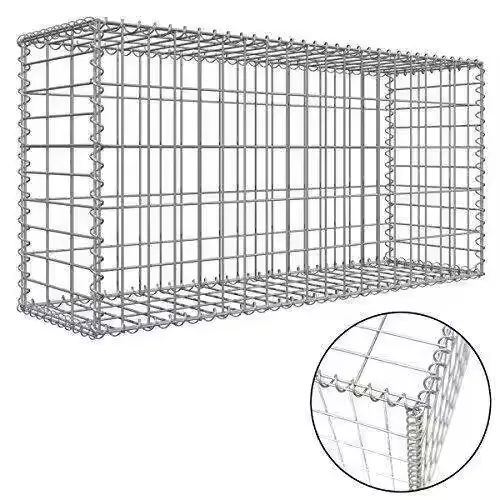-
 Afrikaans
Afrikaans -
 Albanian
Albanian -
 Amharic
Amharic -
 Arabic
Arabic -
 Armenian
Armenian -
 Azerbaijani
Azerbaijani -
 Basque
Basque -
 Belarusian
Belarusian -
 Bengali
Bengali -
 Bosnian
Bosnian -
 Bulgarian
Bulgarian -
 Catalan
Catalan -
 Cebuano
Cebuano -
 China
China -
 Corsican
Corsican -
 Croatian
Croatian -
 Czech
Czech -
 Danish
Danish -
 Dutch
Dutch -
 English
English -
 Esperanto
Esperanto -
 Estonian
Estonian -
 Finnish
Finnish -
 French
French -
 Frisian
Frisian -
 Galician
Galician -
 Georgian
Georgian -
 German
German -
 Greek
Greek -
 Gujarati
Gujarati -
 Haitian Creole
Haitian Creole -
 hausa
hausa -
 hawaiian
hawaiian -
 Hebrew
Hebrew -
 Hindi
Hindi -
 Miao
Miao -
 Hungarian
Hungarian -
 Icelandic
Icelandic -
 igbo
igbo -
 Indonesian
Indonesian -
 irish
irish -
 Italian
Italian -
 Japanese
Japanese -
 Javanese
Javanese -
 Kannada
Kannada -
 kazakh
kazakh -
 Khmer
Khmer -
 Rwandese
Rwandese -
 Korean
Korean -
 Kurdish
Kurdish -
 Kyrgyz
Kyrgyz -
 Lao
Lao -
 Latin
Latin -
 Latvian
Latvian -
 Lithuanian
Lithuanian -
 Luxembourgish
Luxembourgish -
 Macedonian
Macedonian -
 Malgashi
Malgashi -
 Malay
Malay -
 Malayalam
Malayalam -
 Maltese
Maltese -
 Maori
Maori -
 Marathi
Marathi -
 Mongolian
Mongolian -
 Myanmar
Myanmar -
 Nepali
Nepali -
 Norwegian
Norwegian -
 Norwegian
Norwegian -
 Occitan
Occitan -
 Pashto
Pashto -
 Persian
Persian -
 Polish
Polish -
 Portuguese
Portuguese -
 Punjabi
Punjabi -
 Romanian
Romanian -
 Russian
Russian -
 Samoan
Samoan -
 Scottish Gaelic
Scottish Gaelic -
 Serbian
Serbian -
 Sesotho
Sesotho -
 Shona
Shona -
 Sindhi
Sindhi -
 Sinhala
Sinhala -
 Slovak
Slovak -
 Slovenian
Slovenian -
 Somali
Somali -
 Spanish
Spanish -
 Sundanese
Sundanese -
 Swahili
Swahili -
 Swedish
Swedish -
 Tagalog
Tagalog -
 Tajik
Tajik -
 Tamil
Tamil -
 Tatar
Tatar -
 Telugu
Telugu -
 Thai
Thai -
 Turkish
Turkish -
 Turkmen
Turkmen -
 Ukrainian
Ukrainian -
 Urdu
Urdu -
 Uighur
Uighur -
 Uzbek
Uzbek -
 Vietnamese
Vietnamese -
 Welsh
Welsh -
 Bantu
Bantu -
 Yiddish
Yiddish -
 Yoruba
Yoruba -
 Zulu
Zulu
Safety Net Installation Techniques for Effective Building Construction Projects
Safety Net Building Construction Enhancing Safety and Efficiency
In the field of construction, safety is not just a priority; it is a foundational principle that determines the success and sustainability of any project. One important tool that embodies this principle is the safety net. Safety nets have become an essential component in building construction, providing both physical protection and peace of mind for workers and contractors alike.
Safety nets are made from durable materials that can withstand the rigors of construction environments. They are designed to catch falling debris and, most importantly, prevent workers from falling from heights. This is particularly crucial in the construction of multi-story buildings where the risk of falls increases significantly. By utilizing safety nets, construction companies can create a safer working environment, thereby reducing the likelihood of accidents and injuries.
The implementation of safety nets is not just a reactive measure; it plays a proactive role in fostering a culture of safety on construction sites. When workers know that there is a safety net in place, they are more likely to adhere to safety protocols and work with greater confidence. This cultural shift towards safety-conscious behavior can ultimately enhance productivity, as workers can focus more on their tasks rather than worrying about potential hazards.
In addition to safeguarding workers, safety nets also protect the surrounding areas from falling objects. Construction sites can be chaotic, with materials being hoisted, transported, and handled constantly. Without adequate safety measures, there is a risk of tools, equipment, or even large construction materials falling from heights and posing a danger to people nearby. Safety nets act as a barrier, minimizing the chances of such incidents and ensuring that both workers and pedestrians remain safe.
safety net building construction

Moreover, the installation of safety nets can have significant financial implications for construction companies. Workplace accidents can lead to costly lawsuits, project delays, and increased insurance premiums. By investing in safety nets, companies not only mitigate these risks but can also potentially lower their insurance costs over time. In this sense, integrating safety nets into construction practices becomes not only a moral obligation but also a sound business strategy.
The effectiveness of safety nets depends heavily on their proper installation and regular maintenance. Construction companies must ensure that nets are installed according to manufacturer specifications and local safety regulations. Additionally, regular inspections should be conducted to check for wear and tear, ensuring that safety nets remain in optimal condition throughout the duration of the project. Neglecting these responsibilities can undermine the very purpose of safety nets and lead to increased risk on construction sites.
As technology advances, the design and materials used for safety nets continue to evolve. Innovations such as high-strength synthetic fibers and improved anchorage systems have enhanced the performance and reliability of safety nets. These advancements not only improve safety standards but also contribute to the overall efficiency of construction operations, allowing for faster project completion without compromising worker safety.
In conclusion, safety nets are a vital component of building construction that significantly enhance safety and efficiency. They provide protection for workers and the public alike, foster a culture of safety, and offer financial benefits for construction companies. As the construction industry continues to evolve, the emphasis on safety will remain paramount, and the use of safety nets will undoubtedly play a critical role in this ongoing commitment to protecting lives and livelihoods. By prioritizing safety, the industry can build a better future where accidents and injuries are minimized, allowing all stakeholders to engage in construction with confidence and assurance.
-
Shipping Plastic Bags for Every NeedNewsJul.24,2025
-
Safety Netting: Your Shield in ConstructionNewsJul.24,2025
-
Plastic Mesh Netting for Everyday UseNewsJul.24,2025
-
Nylon Netting for Every UseNewsJul.24,2025
-
Mesh Breeder Box for Fish TanksNewsJul.24,2025
-
Expanded Steel Mesh Offers Durable VersatilityNewsJul.24,2025











